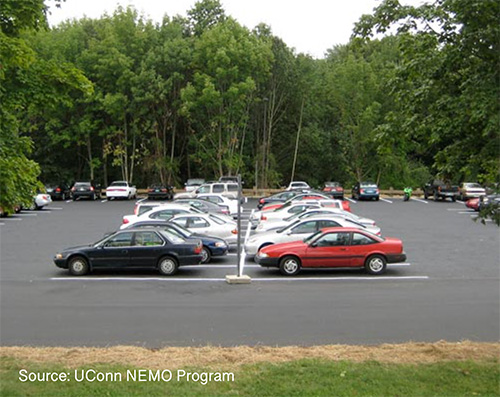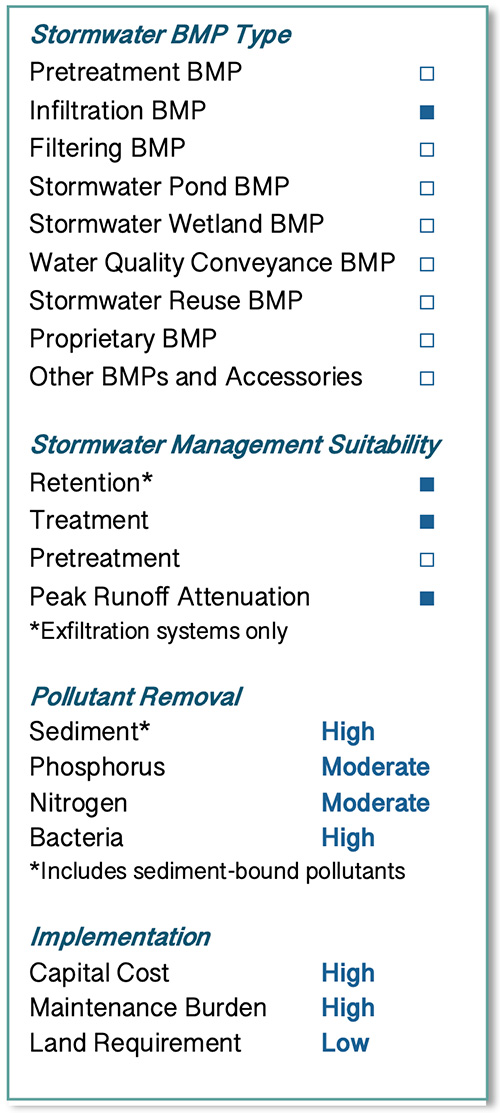Permeable pavement is an alternative paved surface and stormwater management facility designed to capture stormwater runoff and snowmelt and allow it to move through void spaces in the surface course or through the joints in paver units. The captured stormwater is filtered as it moves vertically through the surface course, a transition and filter course, and a storage bed of open-graded aggregate where it is temporarily stored. The stormwater is discharged from the system through infiltration into the underlying soil or using an optional underdrain. Permeable pavement can be used to manage stormwater that falls on the pavement surface, but it may also accept some runoff from adjacent impervious areas.
When design for infiltration, permeable pavement can provide retention of stormwater, reducing runoff volumes and recharging groundwater. Filtration of stormwater is the primary pollutant removal mechanism in permeable pavement systems, although hydrocarbons and other pollutants can biodegrade in the system. Permeable pavement can be designed to store larger volumes of water and provide peak runoff attenuation for larger storms. Similar to other Infiltration BMPs, permeable pavement systems should be lined for certain applications.
There are many types of permeable pavement systems, but the most common are porous asphalt, pervious concrete, and permeable interlocking concrete pavers (PICP). The following photographs show common types of permeable pavement installations in Connecticut.

